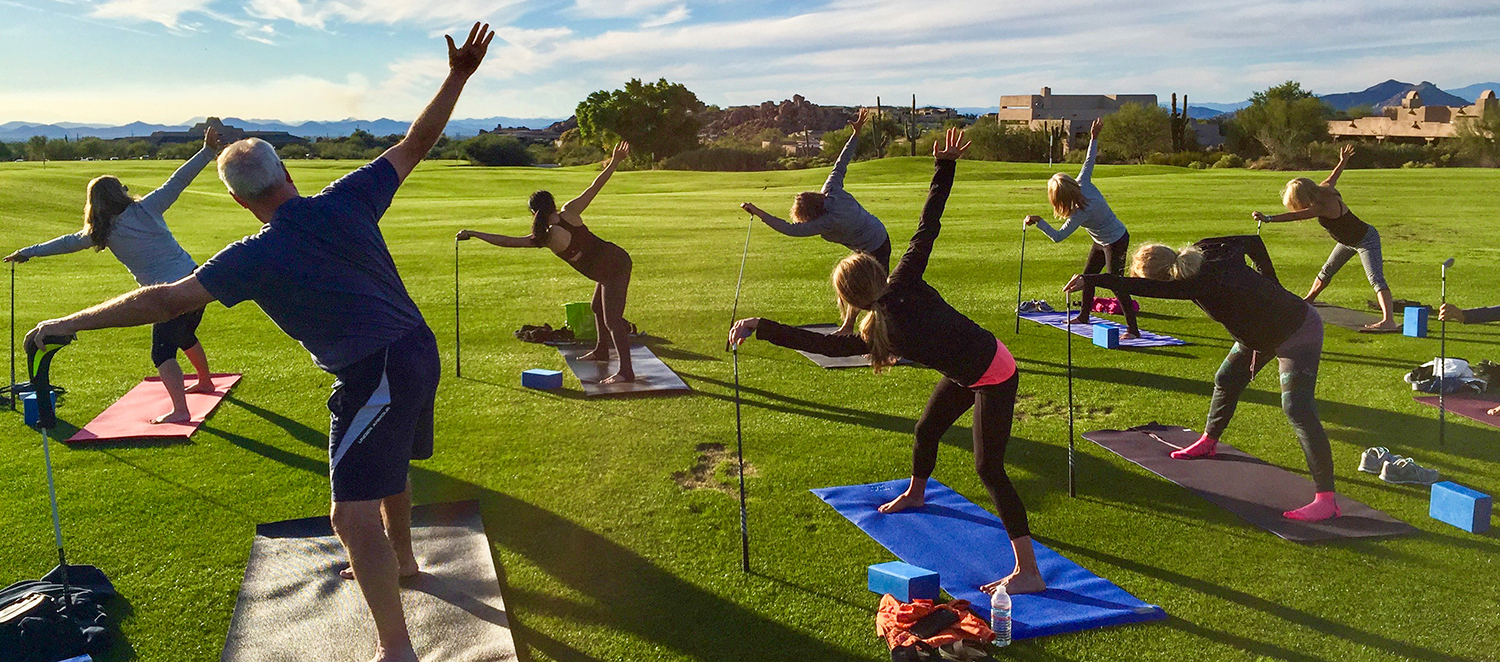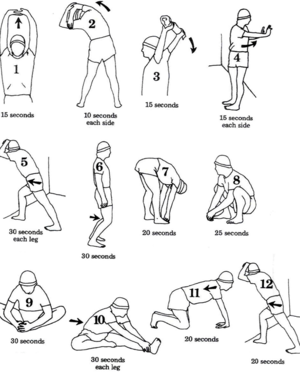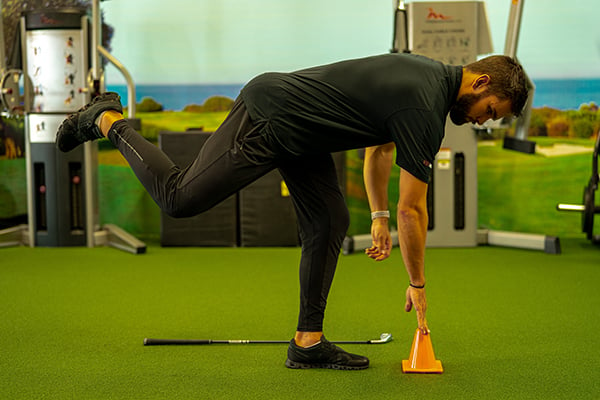Importance of Golf Fitness Routines

Golf is more physically demanding than it often appears, and fitness significantly impacts your performance on the course. A well-designed golf-specific fitness routine can enhance your swing mechanics and stamina, helping you achieve your golfing goals and fully enjoy the game. Even top-tier golfers have had to miss tournaments and titles due to injuries resulting from inadequate strength training.
When you next step onto the course, keep in mind that your fitness level can greatly influence various aspects of your game, including swing efficiency and endurance.
Importance of Off-Course Fitness
The significance of physical fitness in golf cannot be underestimated. A well-conditioned body complements swing mechanics and mental strategies, enhancing performance and reducing injury risk. Embracing a holistic fitness approach can lead to a lifetime of golfing excellence and improved overall health.
Fitness including strength training as well as mobility exercises is very important for golfers as it helps them perform better and most importantly, it reduces the risk of injury to a large extent.
Some important aspects to be kept in mind for creating the perfect Golf Fitness Training Program
Key Aspects of a Golf Fitness Training Program:
-
Strength: Golf demands core, shoulder, and leg strength. Building strength can increase clubhead speed, leading to longer drives and more accurate shots.

-
Flexibility: Flexibility is crucial for a powerful and compact swing. Rigidity in shoulders, hips, hamstrings, or other muscles can hinder a player’s ability to achieve an optimal swing.

-
Balance: Good balance is vital for a precise and effective golf swing. Balance exercises help you harness your strength without sacrificing accuracy or stability.

-
Endurance: Muscular endurance is important for maintaining high performance throughout a round, a tournament, or an entire season.

Golf, often perceived as a leisurely sport, involves considerable physical effort, including walking several miles and making numerous swings that engage various muscle groups. To excel, it is essential to understand how fitness affects your performance, from your swing mechanics to your stamina. Research indicates that regular golfers tend to have a longer lifespan than non-golfers, suggesting that maintaining fitness can extend your enjoyment of the game into your later years.
The Role of Fitness in Golf
A significant advantage of incorporating a fitness program into your golf routine is the potential for extended participation in the sport. Research indicates that golfers who are actively engaged in the game tend to enjoy a longer lifespan compared to those who do not play. Staying physically active through golf not only enhances your enjoyment of the sport but may also contribute to a longer life. To ensure you can continue playing golf into your retirement, it’s important to maintain good physical health.
I cannot stress enough the importance of physical fitness in a golfer’s career. Beyond the swing mechanics and mental strategies of the game, maintaining a well-conditioned body is crucial for every golfer to perform at their best. From enhancing performance to preventing injuries, a holistic approach to physical fitness is essential for achieving long-term golfing excellence and overall well-being.
Over the years of being associated with the Golf industry, I have seen the best of golfers missing out due to inefficient golf training programs and some mediocre players making it big as they paid heed to their golfing fitness journey above all.
Personal fitness is essential for playing golf at a high level. Golfers who have prioritized physical fitness have been seen gaining competitive advantage over their peers on the golf course by improving their strength, flexibility, balance, and endurance.
Integrating Fitness into Your Golf Routine
Golf demands a blend of strength, flexibility, and endurance for precise and powerful shots. Regular exercise enhances muscle tone, agility, and overall physical capability, helping golfers perform at their best.
Boost your competitive advantage in your next game by incorporating these three essential fitness components into your training regimen:
- Focus on Golf-Specific Exercises: Move away from traditional gym machines that isolate muscle groups and consider tools that promote functional movement. Use equipment such as cable machines, fitness balls, medicine balls, balance disks, and your own body weight to support full-body athleticism.
- Prioritize Core Stability: Efficient movement and power in golf require strong core stability. Enhance your trunk and core strength to provide a stable base for rotational movements and effective power transfer.
- Incorporate Multiple Planes of Motion: Your fitness program should include exercises that engage various planes of motion—front-to-back, side-to-side, and rotational. Examples include multi-directional lunges and medicine ball wood chops.
By integrating these elements into your fitness routine, you can improve your strength, flexibility, balance, and endurance, gaining a competitive edge on the course and supporting long-term golfing success.
Steps to Create a Balanced Golf Fitness Routine
To harness the benefits of physical fitness for your golf game, create a balanced exercise routine tailored to your specific needs. Follow these steps:
- Assess Your Current Fitness Level: Evaluate your strength, flexibility, and cardiovascular fitness to identify areas for improvement.
- Consult an Expert: Seek guidance from a certified golf fitness trainer who can design a personalized workout routine based on your golf goals and physical condition.
- Improve Range of Motion and Flexibility: Prioritize stretching exercises, particularly for the upper body.
- Focus on Core Strength: Incorporate exercises targeting the abdominal and lower back muscles, which form the foundation of a powerful golf swing.
- Enhance Endurance: Embrace cardiovascular conditioning through activities such as brisk walking or cycling.
- Maintain Consistency: Integrate your fitness regimen into your regular schedule to reap the benefits of your golf fitness program.
How Exercises Benefit Specific Golf Needs
- Improved Swing Mechanics: Enhanced strength and flexibility from fitness training contribute to better swing mechanics. A stronger core and lower body provide stability and power, enabling more control and speed with the club.
- Increased Distance: A fitter body can achieve longer drives. Improved strength and flexibility allow for a fuller backswing and greater force through impact, increasing ball distance.
- Enhanced Endurance: Golf can be physically taxing, especially when walking the course. Better cardiovascular fitness and stamina help maintain focus and energy throughout the round, reducing fatigue-related errors.
- Injury Prevention: Golfers are prone to injuries, particularly in the lower back, shoulders, and wrists. Targeted fitness programs can help minimize injury risk and support long-term enjoyment of the sport.
- Better Balance and Coordination: Fitness training improves balance and coordination, which are crucial for a consistent swing. Enhanced stability helps maintain control during the swing, leading to more accurate shots.
Tips for Staying Motivated and Consistent: Practical tips for maintaining a routine, even with a busy schedule
For those new to fitness, exercise may seem like a chore, but it can also be a great way to relieve stress and have fun. Consider incorporating enjoyable activities into your routine, such as listening to music or catching up on podcasts while running, or playing sports with friends to combine socializing with exercise.
There are many fun ways to frame exercise as something other than a chore. Take some time to discover what types of fitness you enjoy most, and commit to making working out an exciting part of your day that you can look forward to regularly. Remember that exercising should make you feel good, and you can reward yourself after a workout by feeling rejuvenated.
To make fitness a regular and enjoyable part of your life:
- Set Realistic Goals: Start with small, achievable goals and gradually work up to larger ones. Break down long-term goals into smaller milestones.
- Reward Yourself: Recognize your progress to stay motivated. Celebrate achievements with small rewards like new workout gear or a Greg Norman Golf Polo T-shirt from Golf Buy India.
- Find a Workout Buddy: Exercising with a friend or trainer can boost motivation and accountability. A supportive companion makes the process more enjoyable.
- Track Your Progress: Monitoring your progress is a powerful motivator. Record metrics like weight loss, running times, or weights lifted. Utilize fitness apps or wearable devices to track heart rate and workout duration.
Nutrition and Recovery
Understanding nutrition for golf is crucial for enhancing performance on the course. Unlike many sports, golf can last several hours and involves varying levels of activity, from periods of inactivity to bursts of high intensity. This guide will cover essential nutrition tips to help you improve your game on your next round.
Key Golf Nutrition Tips

Effective nutrition is often overlooked by golfers, especially beginners. Many players may not realize that even slight changes in clubface angle, swing speed, and visual focus can be affected by poor nutrition, potentially increasing the risk of injury as well.
Here are five important nutrition tips to elevate both your performance and well-being:
- Stay Hydrated: Neglecting hydration can diminish your potential. Mild dehydration (around 1%) can impair cognitive function. Replace sugary drinks and alcohol with water, and carry a bottle to sip throughout your round.
- Maintain Energy Levels: Golf rounds can extend from 4 to over 8 hours, requiring sustained energy. Include long-lasting fuel sources like proteins and healthy fats in your diet. Avoid simple carbohydrates that cause energy crashes.
- Eat a Balanced Pre-Game Meal: Eat a balanced meal 1-3 hours before your round. Opt for complex carbohydrates and lean proteins. For example, a chicken stir fry with vegetables provides sustained energy.
- Choose Smart Snacks: Healthy snacks can keep your energy up between holes. Opt for nuts, fruits, or golf nutrition bars for enduring fuel and motivation.
- Support Recovery with Nutrition: Post-round nutrition is crucial. Foods high in protein and some carbohydrates aid in muscle recovery and glycogen replenishment. A quick option is a protein shake with a banana if you're short on time.
Implementing these nutritional strategies can help enhance your golf performance and support overall well-being, making a significant difference in your game.
Basic Exercise Routine Suggestion
Here is a starter's guide for a weekly fitness plan to elevate your fitness. Tailor it to meet your individual goals:
- Day One: Core
- Day Two: Upper Body
- Day Three: Cardio
- Day Four: Rest
- Day Five: Lower Body
- Day Six: Cardio
- Day Seven: Rest
Aim to progressively enhance your fitness routine each week by increasing weights or repetitions and introducing new exercises to keep your workouts varied and engaging.
Additional Resources
For further guidance, consider these books on golf fitness:
- ‘Golf Anatomy’ by Craig Davies and Vince Disaia: This book explains the benefits of exercises with detailed illustrations.
- ‘6 Weeks To Golf Fitness’ by Phil Davies: Provides a series of step-by-step home exercise programs.
- ‘Fit for Golf, Fit for Life’ by Randy Meyers: Offers effective exercises and stretches for a better swing and extended playing years.
- ‘The Ultimate Guide to Golf Fitness Training’ by Mark Tolle: A straightforward guide to developing a golf fitness program.
You can also check out these resources for golf-specific workouts:
- Men's Journal: 10 Best Exercises for Golfers
- Golf.com: 6 Exercises to Get in Shape
- Golf Monthly: Fitness Tips
Conclusion
Creating a targeted fitness plan that focuses on your specific golf training needs is a step in the right direction. A fitness plan should be a distinctive design based on the golfer’s strength and flexibility. However, a general rule is for a golfer to begin with stretching and mobility exercises before progressing to strength and power training.
So what are you waiting for? Hurry up and start your golf fitness journey today!
And if you are already following a golf training program, individually or with a trainer, we would love to hear about it! Do drop a comment and share your journey with us to inspire all of our readers and your fellow golfers!



